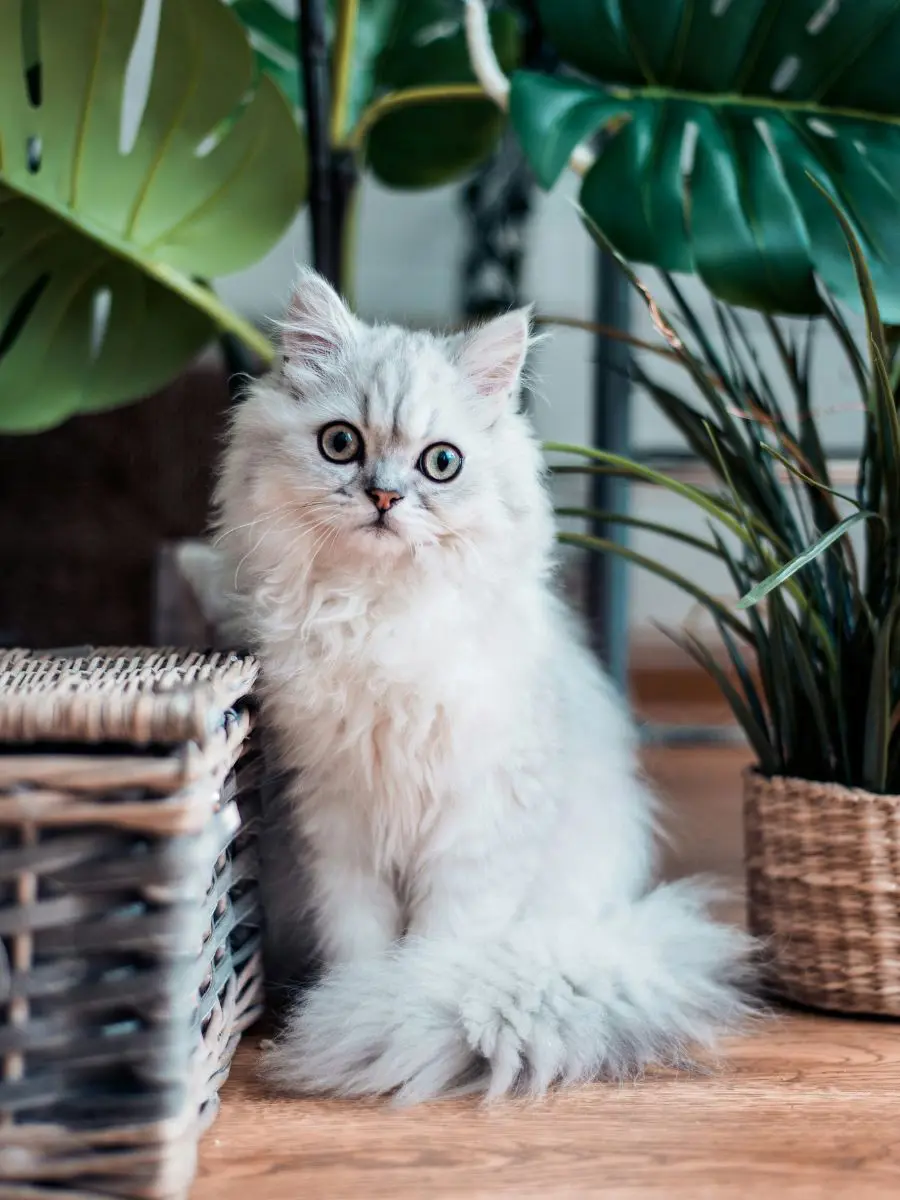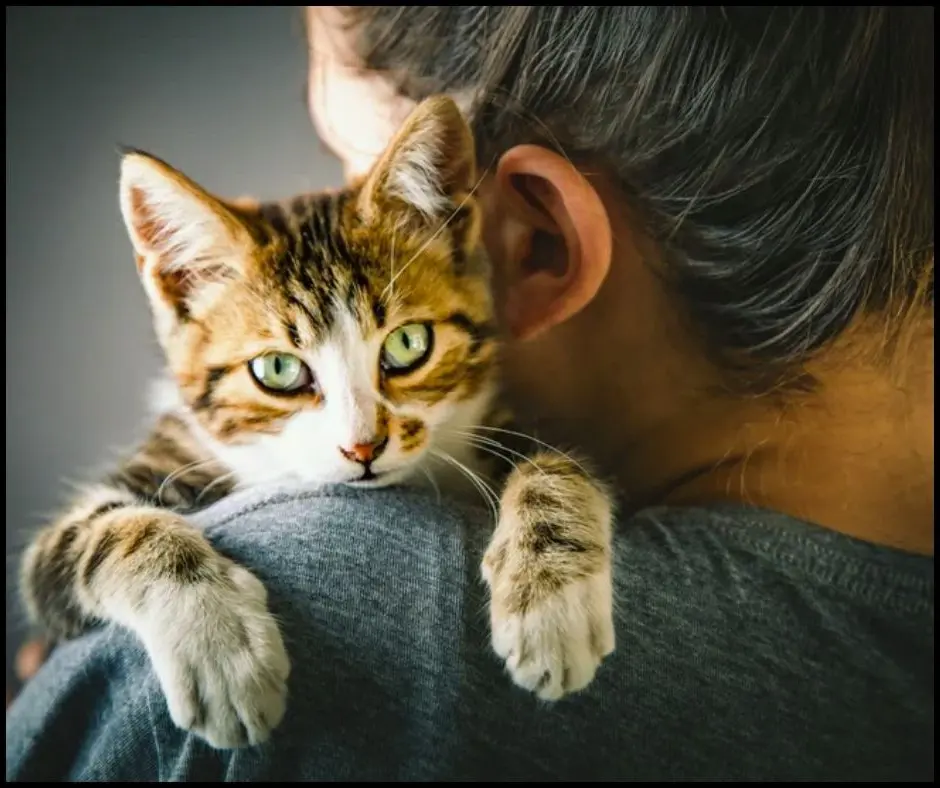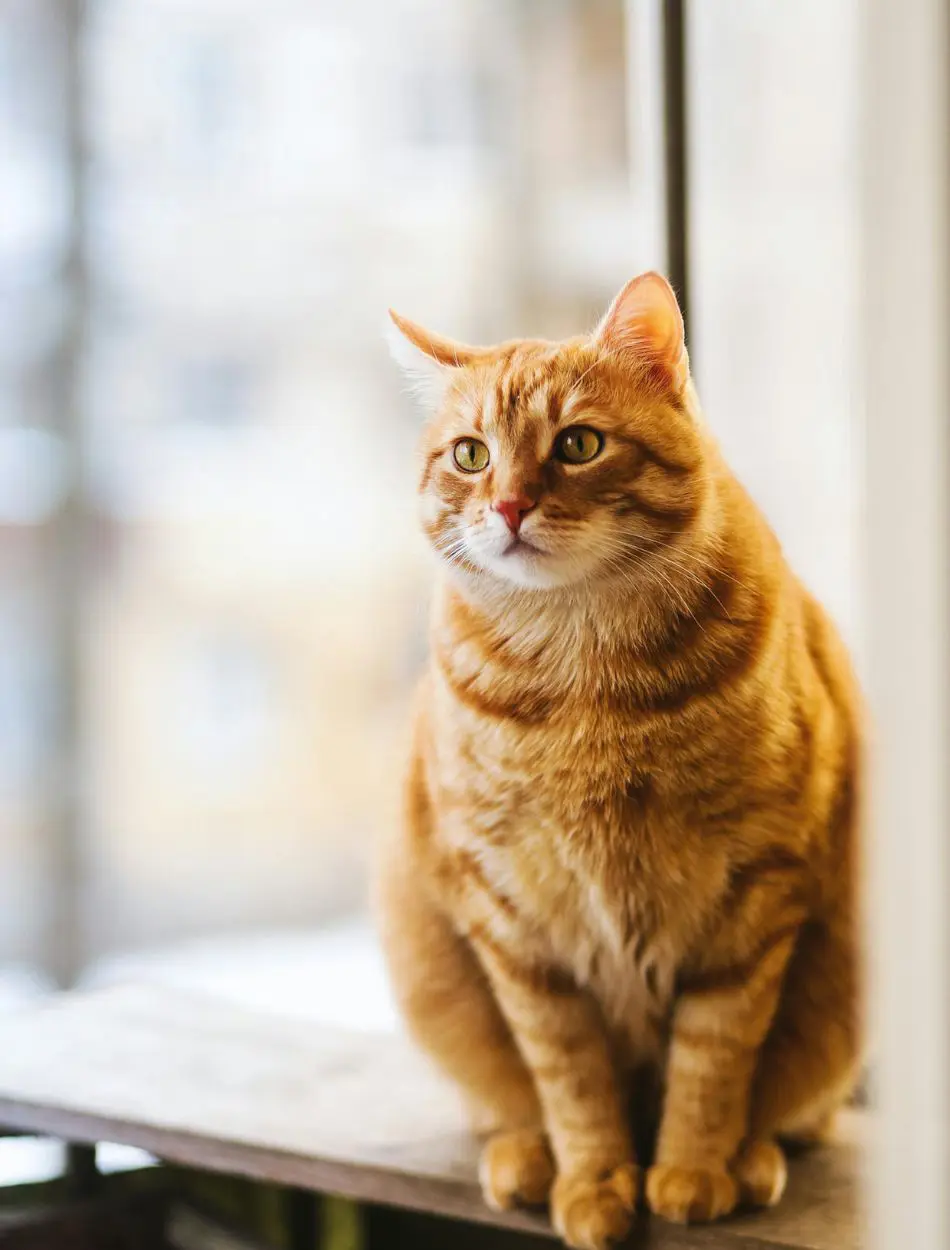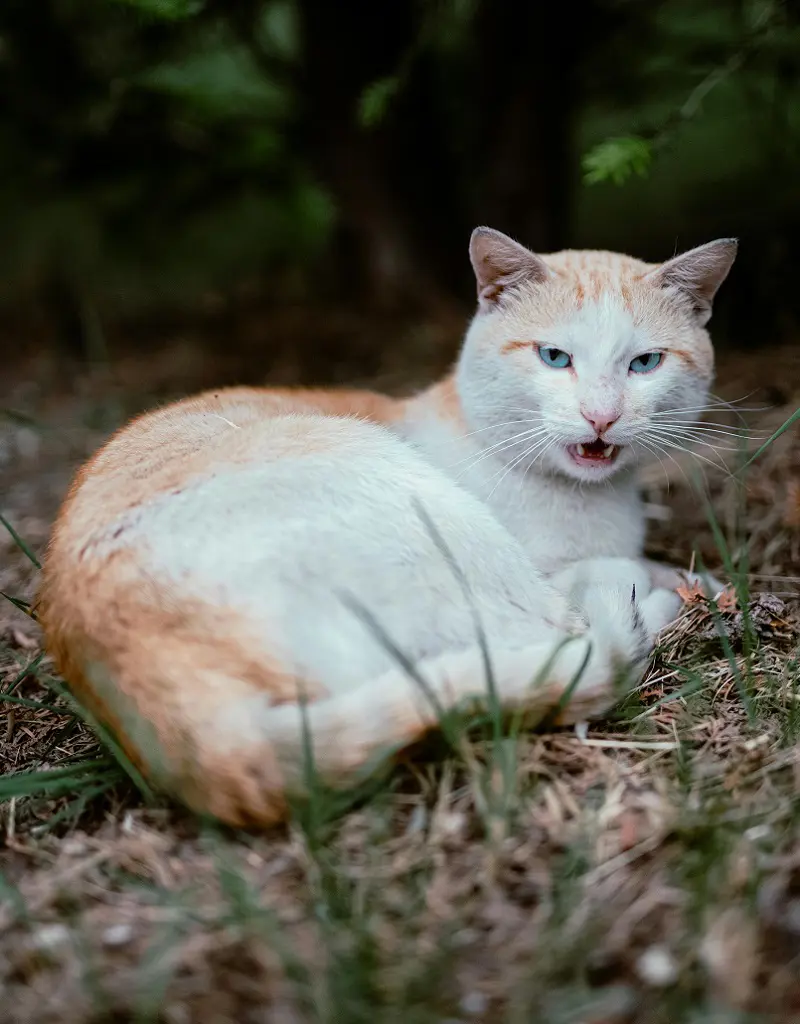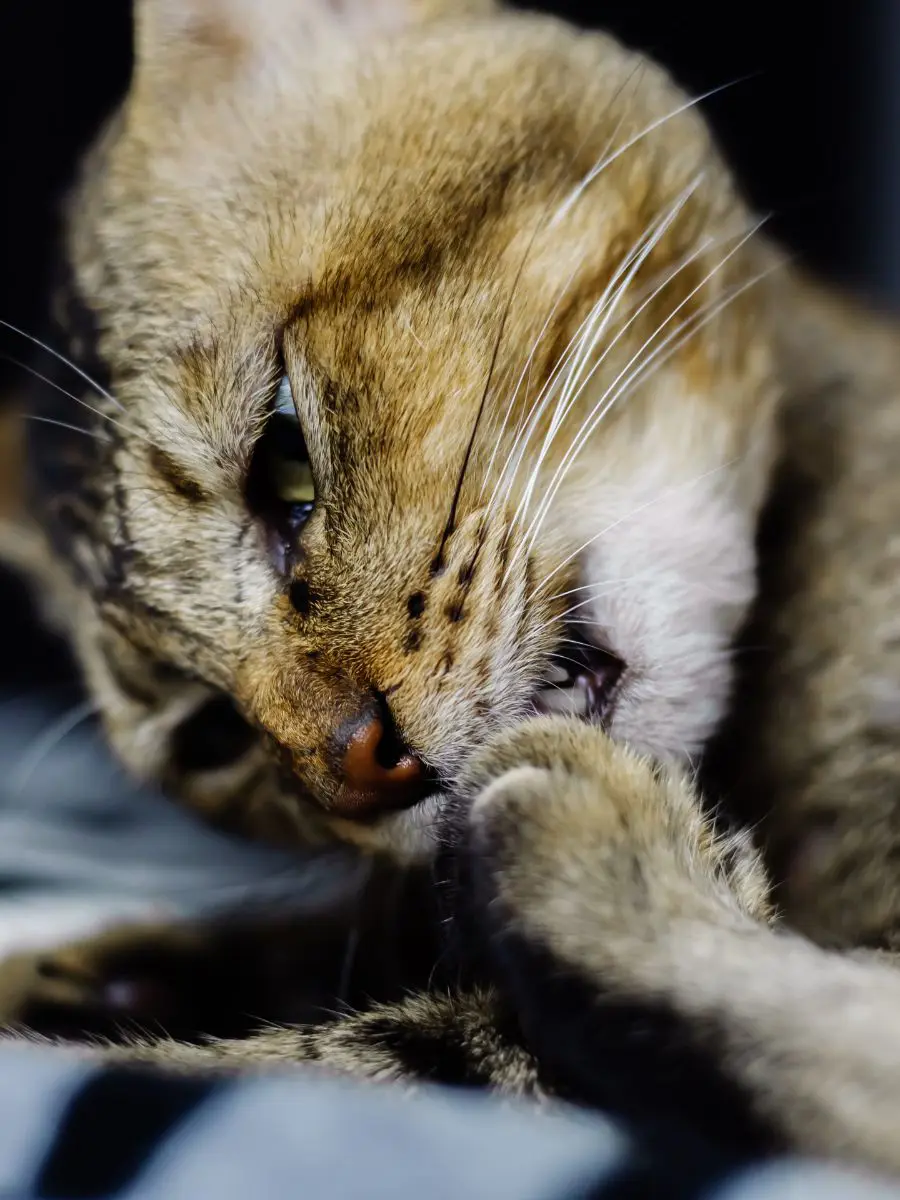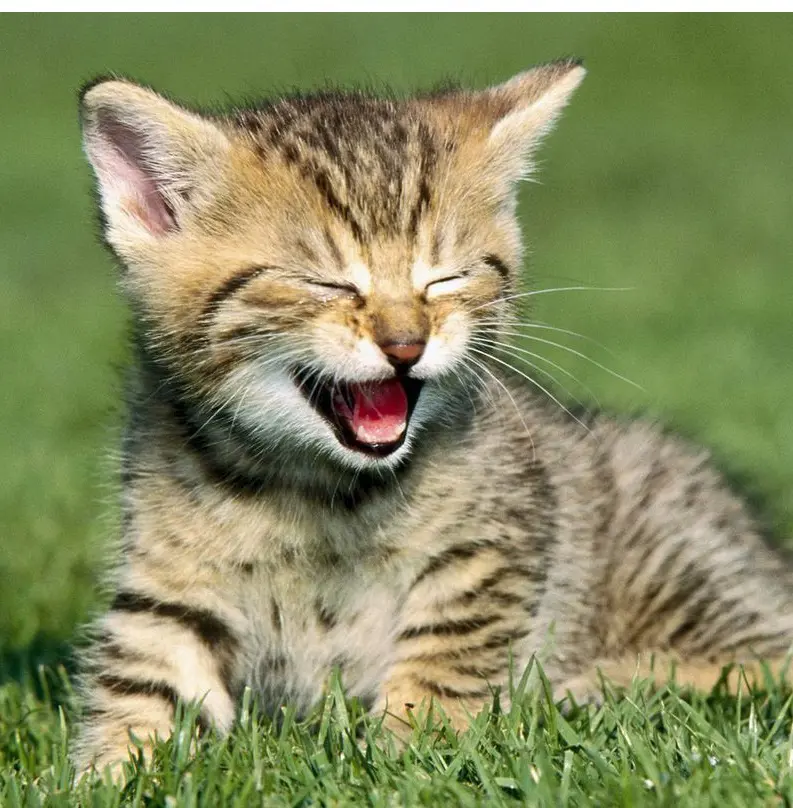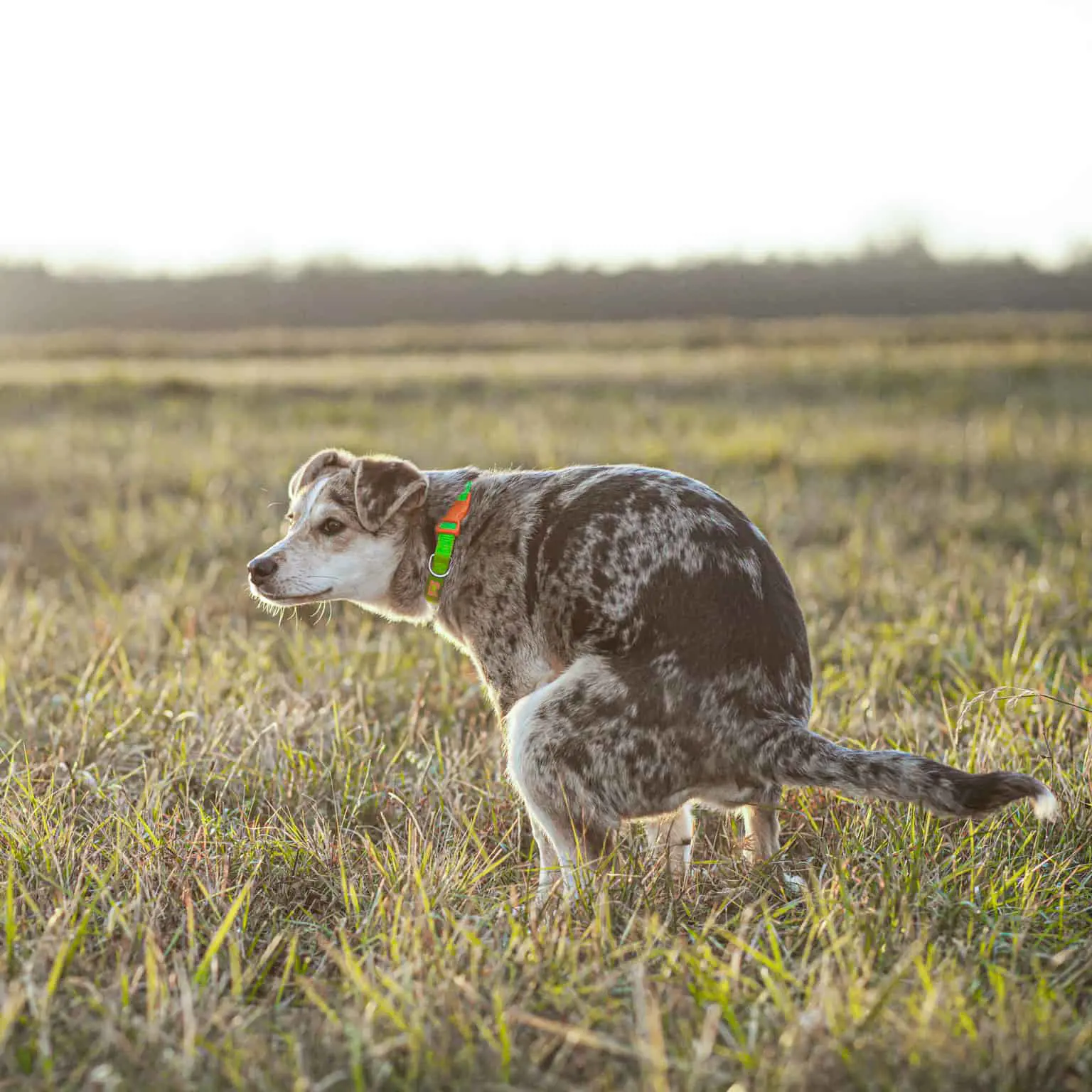The 20 Fluffiest Cat Breeds
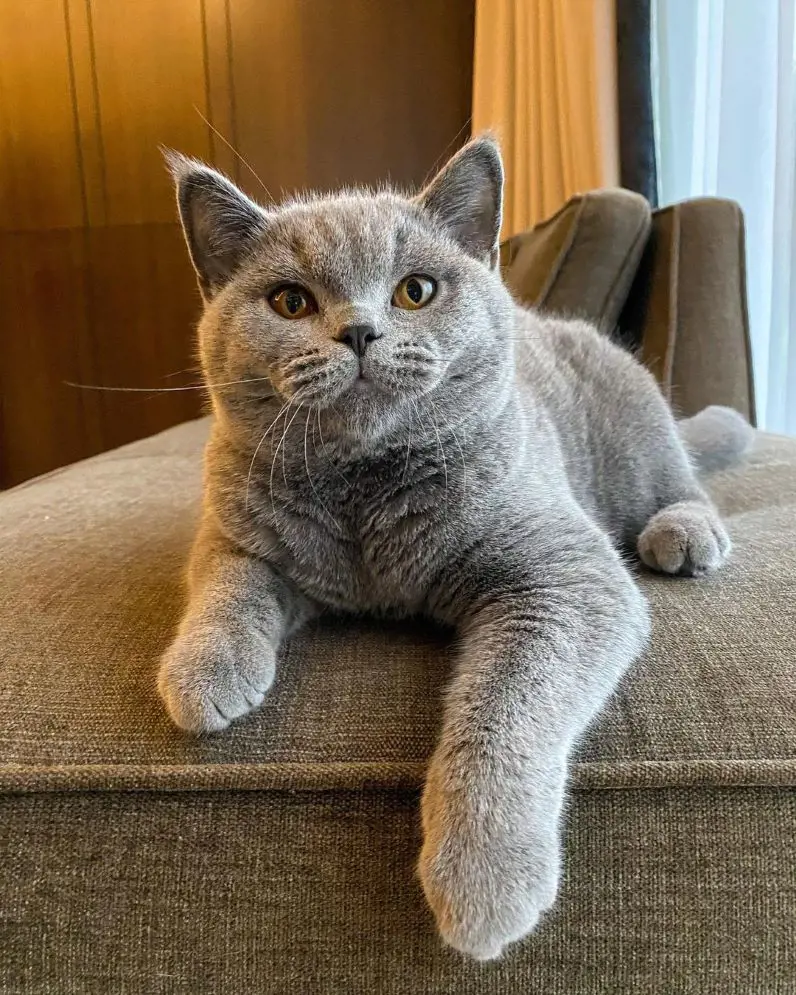
Fluffy cats have long and thick fur that is incredibly soft to touch. Their fluffiness makes them irresistible to cuddle and snuggle with, giving them a cozy and warm feel.
The fluffiness of these cat breeds makes them stand out from other cats and makes them highly photogenic. Their adorable and fluffy appearance makes for cute and memorable pictures that are loved by cat lovers.
So, for such cat lovers, we have listed 20 fluffiest cat breeds with pictures and adorable features of each.
1. Persian Cat
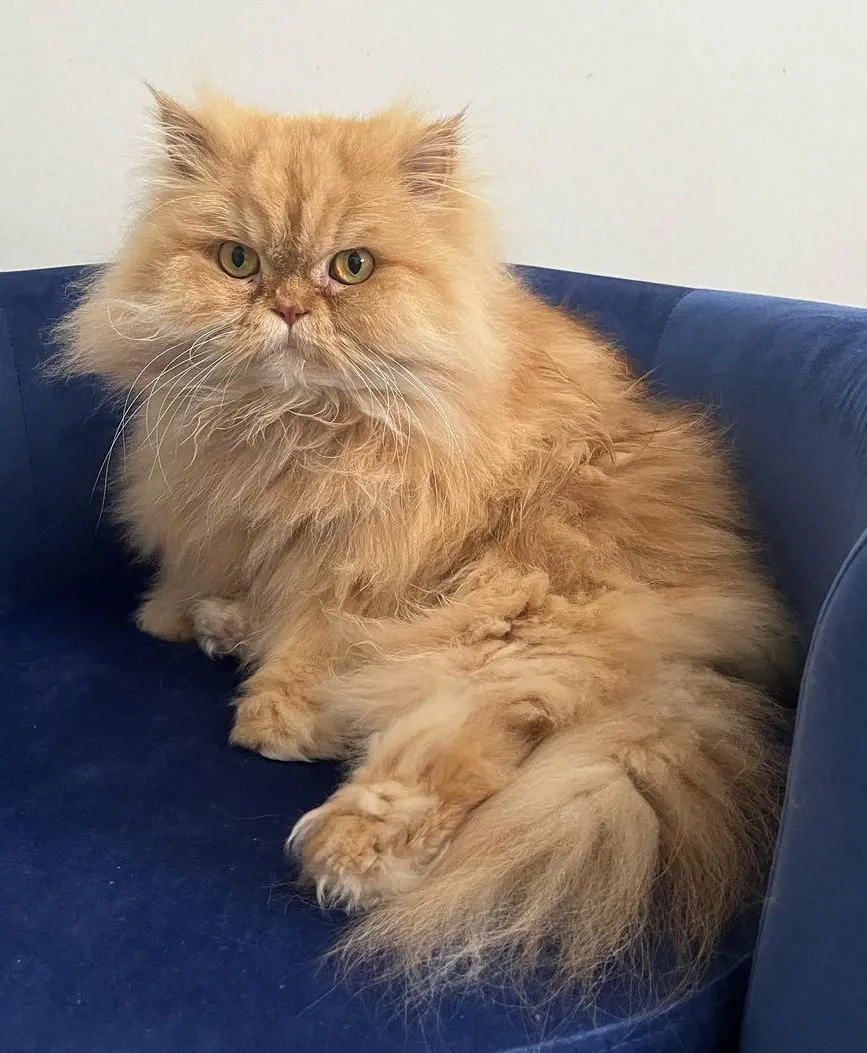
Fluffy long haired cat breeds include the most popular Persian cats. Persian cats are known for their long, soft and luxurious coats. They have a thick, dense, and silky coat that comes in a variety of colors and patterns. Their fur often requires regular grooming to prevent matting.
They have distinctive round faces with a flat nose and large, expressive eyes. Persian cats have a bushy and plumed tail that matches the length and fluffiness of their coat. The Persian cat is believed to have originated in Persia (modern-day Iran) around the 17th century. It is thought to be descended from longhaired cats brought to Persia from Turkey.
2. Maine Coon
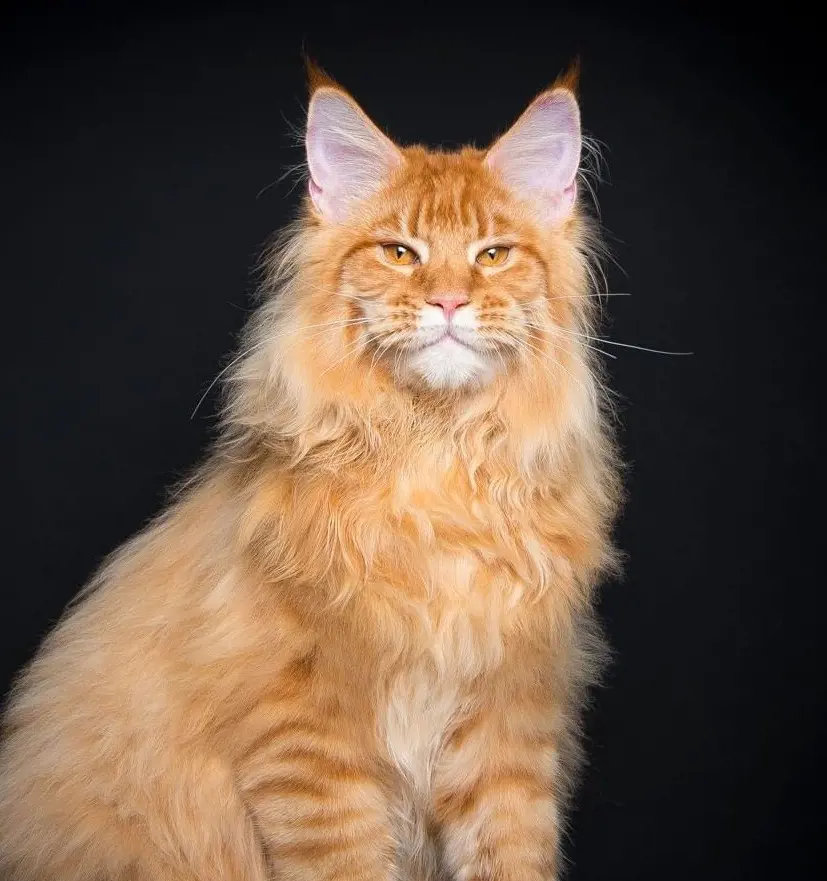
The Maine Coon is among the biggest cat breeds in the world. The Maine Coon has a long, shaggy, and water-repellent double coat that keeps it warm and protected in harsh weather conditions. The coat is soft and silky, and it becomes thicker and longer during the winter months.
While the breed's exact origin is uncertain, there are several theories about its ancestry. One popular theory suggests that the Maine Coon is descended from longhaired cats brought to Maine by European sailors in the 18th century. These cats may have mated with local short-haired cats, resulting in a breed with a thick, water-resistant coat and a large, sturdy body.
3. Himalayan
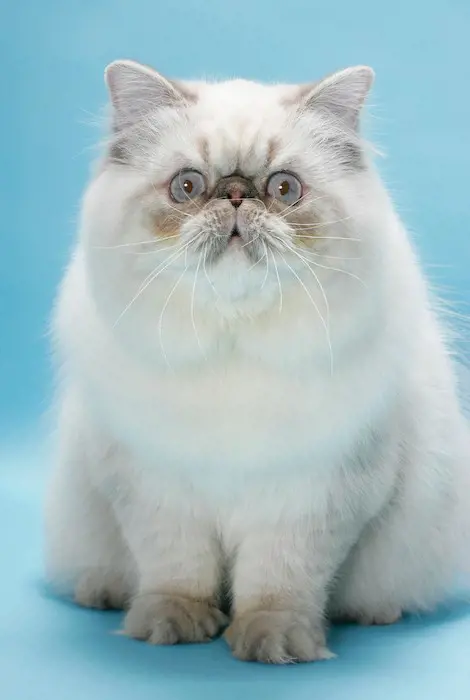
Himalayan cats are known for their extreme fluffiness. Their long, thick fur covers their entire body, giving them a very fluffy and plush appearance. Their fur is typically soft and silky, adding to their overall fluffiness. Additionally, Himalayan cats have a thick ruff of fur around their neck, which further enhances their fluffy appearance.
The Himalayan cat breed is believed to have originated in the United States in the 1930s. It is a crossbreed between the Persian cat and the Siamese cat. The goal was to create a cat breed with the luxurious long hair of the Persian and the striking blue eyes and color points of the Siamese.
4. Ragdoll
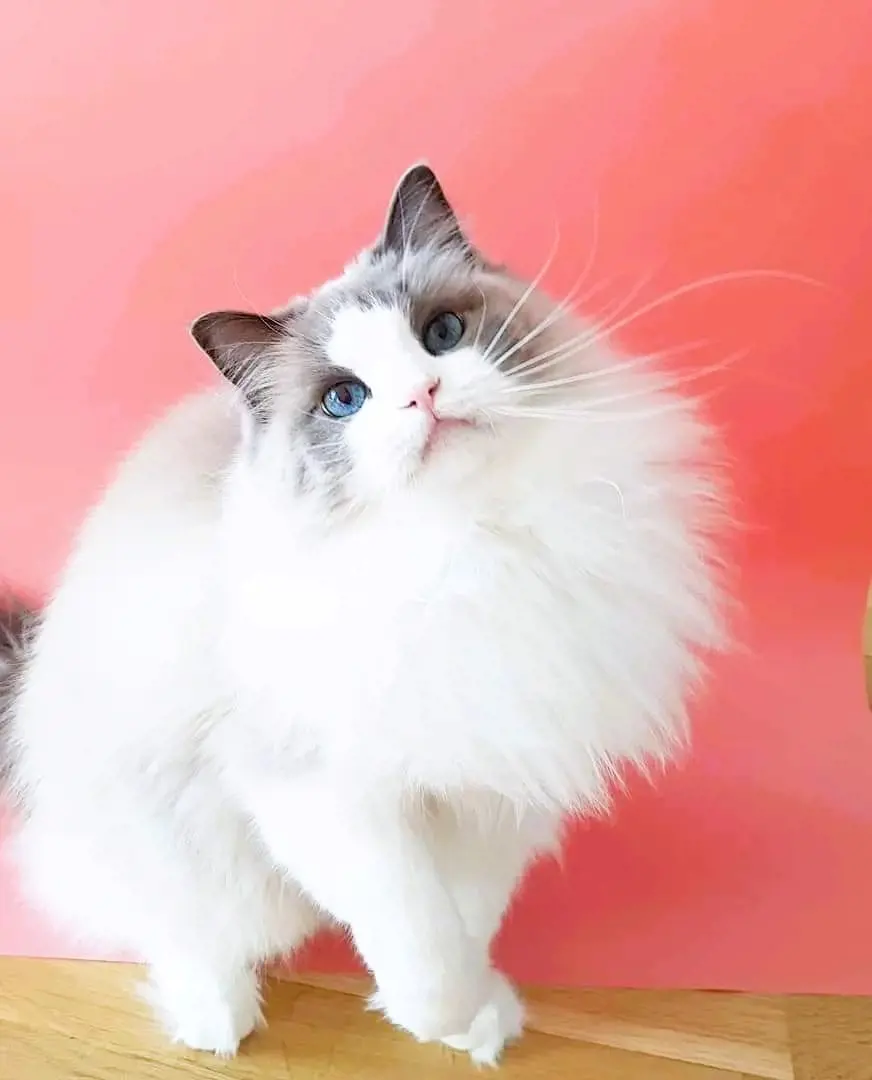
Ragdolls have a semi-longhaired coat that is soft, silky, and luxurious to the touch. Ragdolls have a prominent ruff of fur around their neck, which resembles a fluffy collar. This feature is more pronounced in males and adds to their regal appearance. Their tail is long and bushy, with longer fur that feathers out towards the end.
Moreover, Ragdolls have full cheeks with thick fur, contributing to their sweet and innocent expression. The fluffy cheeks give them a rounder face shape. Their paws are often described as "floofy" due to the tufts of fur between their toes. These fluffy paw pads add an adorable touch to their overall appearance.
5. Siberian
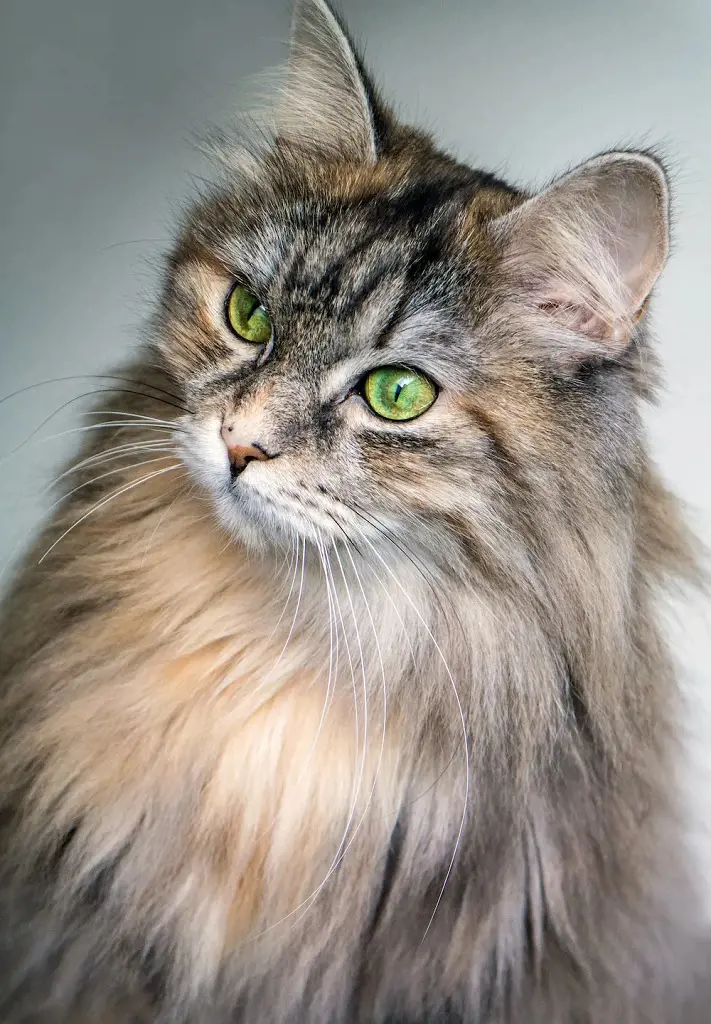
Siberian cats have a double coat that consists of a soft and dense undercoat, which is covered by longer, water-repellent guard hairs. This fur helps them stay warm in cold climates. Despite their long fur, Siberian cats are considered hypoallergenic. They produce less of the allergenic protein Fel d 1, which is the main cause of cat allergies in humans.
Siberian cats have tufted ears, which means they have extra hair growing from the tips of their ears. These tufts give them a wild and exotic look. They also have a thick and bushy tail that is often carried high and curled at the tip. The Siberian cat is a breed of domestic cat that originated in Russia. It is believed to have been around for centuries and has been a natural breed in the region for a long time.
6. British Longhair
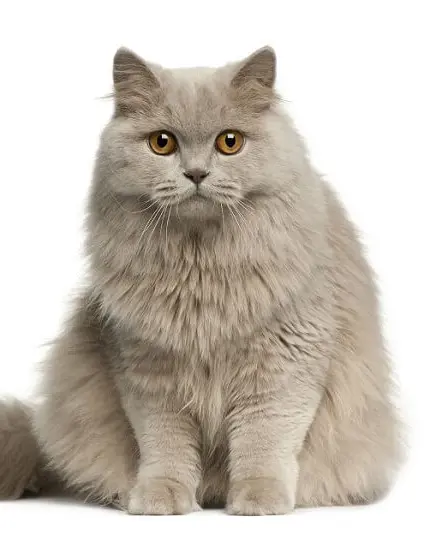
The British Longhair has a thick and luxurious double coat that is soft to the touch. The fur is long and dense, giving the cat a fluffy appearance. This breed has a round face with full cheeks, which adds to its adorable and innocent look.
The tail of a British Longhair is long and thick, often featuring a plume of fur at the end. It adds to their overall elegance and cuteness. British Longhairs tend to have a slightly chubby appearance due to a sturdy build with a broad chest and a muscular body.
7. Scottish Fold
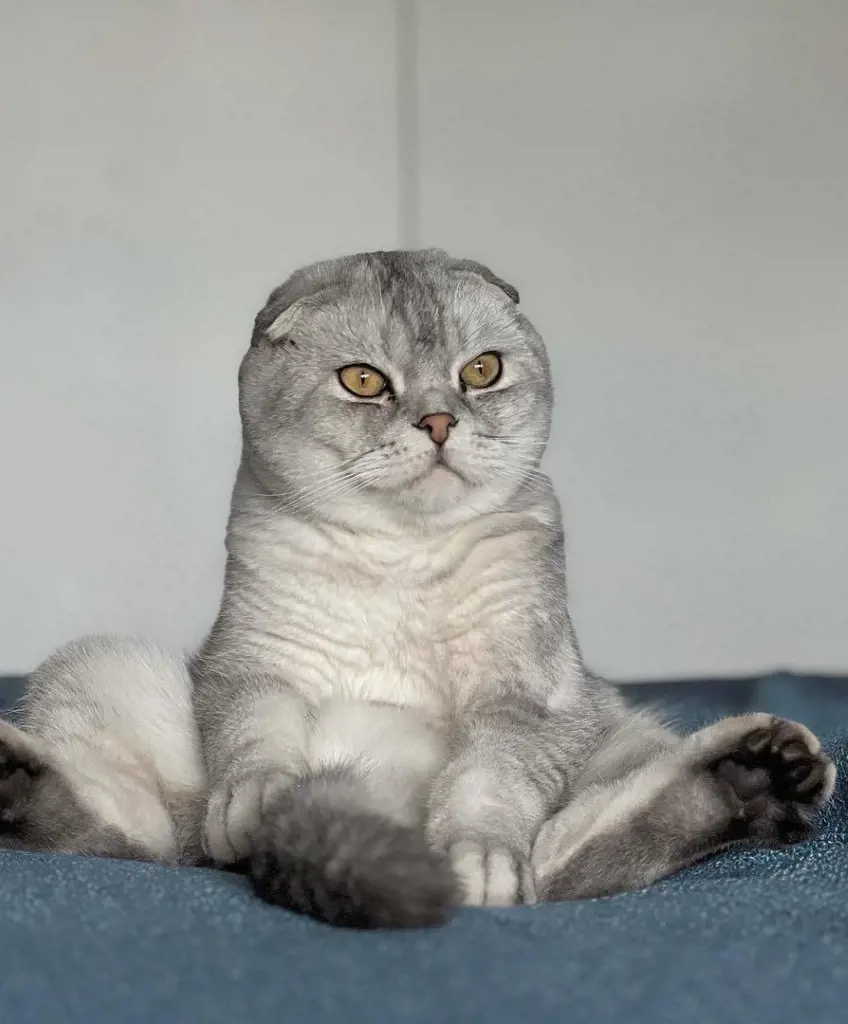
Scottish Folds are among the most famous fluffy short hair cat breeds. They have a dense and plush double coat that is soft and silky feel. The fur can be short or long, depending on the specific variety. Common coat colors include white, black, blue, cream, red, and tabby patterns.
Their most distinctive feature is their folded ears, which are the result of a genetic mutation. The Scottish Fold breed originated in Scotland in the 1960s when a farmer named William Ross discovered a cat with folded ears on his farm. He named the cat Susie and started breeding her with other cats, resulting in the development of Scottish fold.
8. Balinese
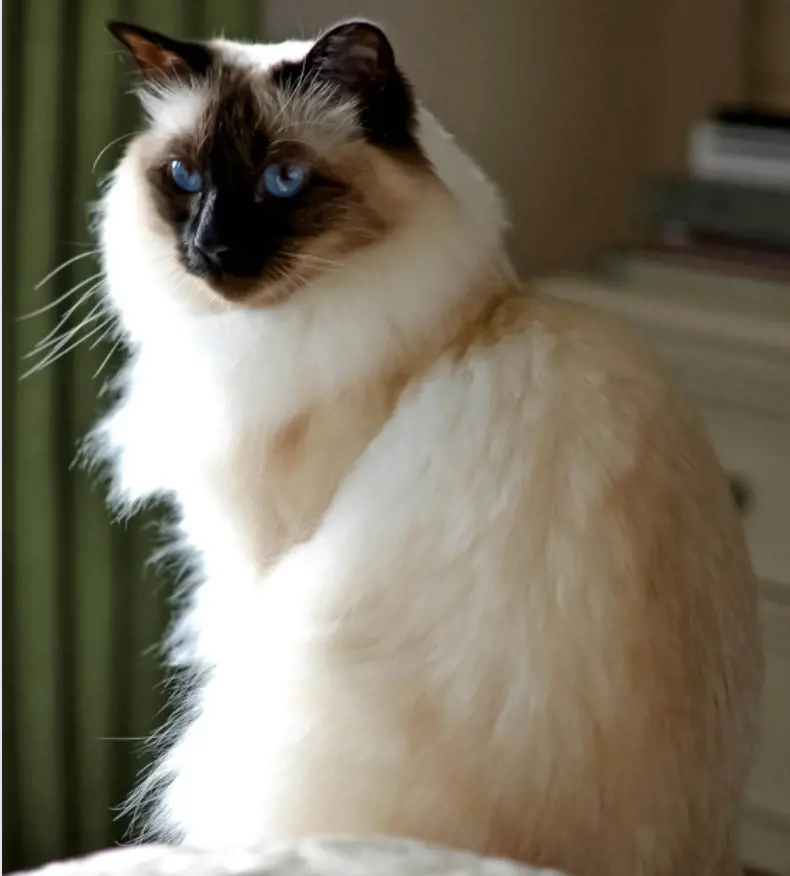
Balinese cats have long, flowing fur that is soft and silky to the touch. Their fur is often compared to rabbit fur, adding to their fluffy appearance. They have a long, plumed tail that adds to their overall fluffy appearance.
Balinese cats have a sweet and gentle facial expression, with a slight smile and soft features. This expression adds to their overall cuteness and makes them irresistible. The Balinese cat is believed to have originated from the Siamese cat breed in the United States in the 1950s. The goal was to have long hair like Persian cat retaining the Siamese cat's color points and body shape.
9. Turkish Van
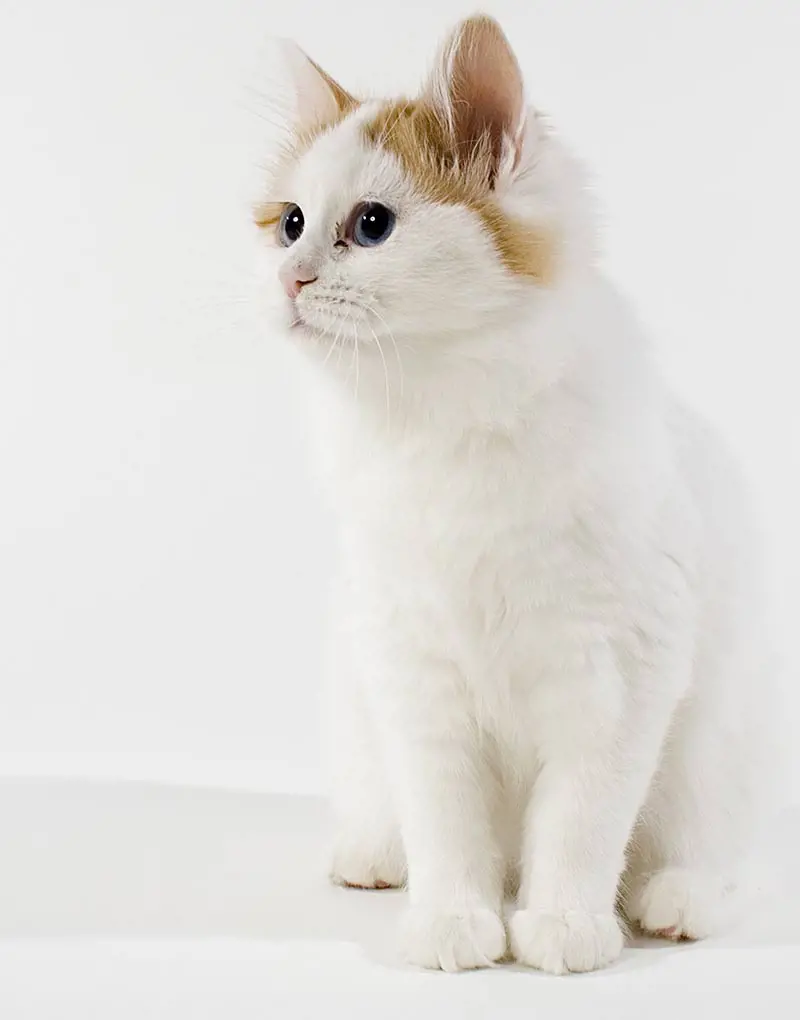
The Turkish Van is one of the cat breeds with fluffy tails and voluminous coat. The fur of a Turkish Van has a soft and luxurious feel, often compared to cashmere. They have a semi-long, silky, and water-resistant coat. It is not as long as that of some other long-haired cat breeds, but it still provides a luxurious appearance.
Turkish Vans have a distinctive color pattern known as "van pattern." This pattern consists of a mostly white body with patches of color on the head and tail. The color patches can be shades of red, cream, black, or blue. They also have a long and fluffy tail that adds to its overall elegance.
10. Norwegian Forest Cat

The Norwegian Forest Cat has a double-layered coat that is designed to protect them from the harsh Nordic winters. Underneath the longer guard hairs, these cats have a dense and woolly undercoat. This undercoat helps to keep them warm during cold weather.
They have a long, bushy tail that helps them maintain balance while climbing and jumping. The tail is often carried high, making them look elegant and regal. The Norwegian Forest Cat is thought to be related to the cats brought to Norway by the Vikings around 1,000 years ago. These cats interbred with local feral cats, resulting in the development of the Norwegian Forest Cat breed.
11. American Bobtail
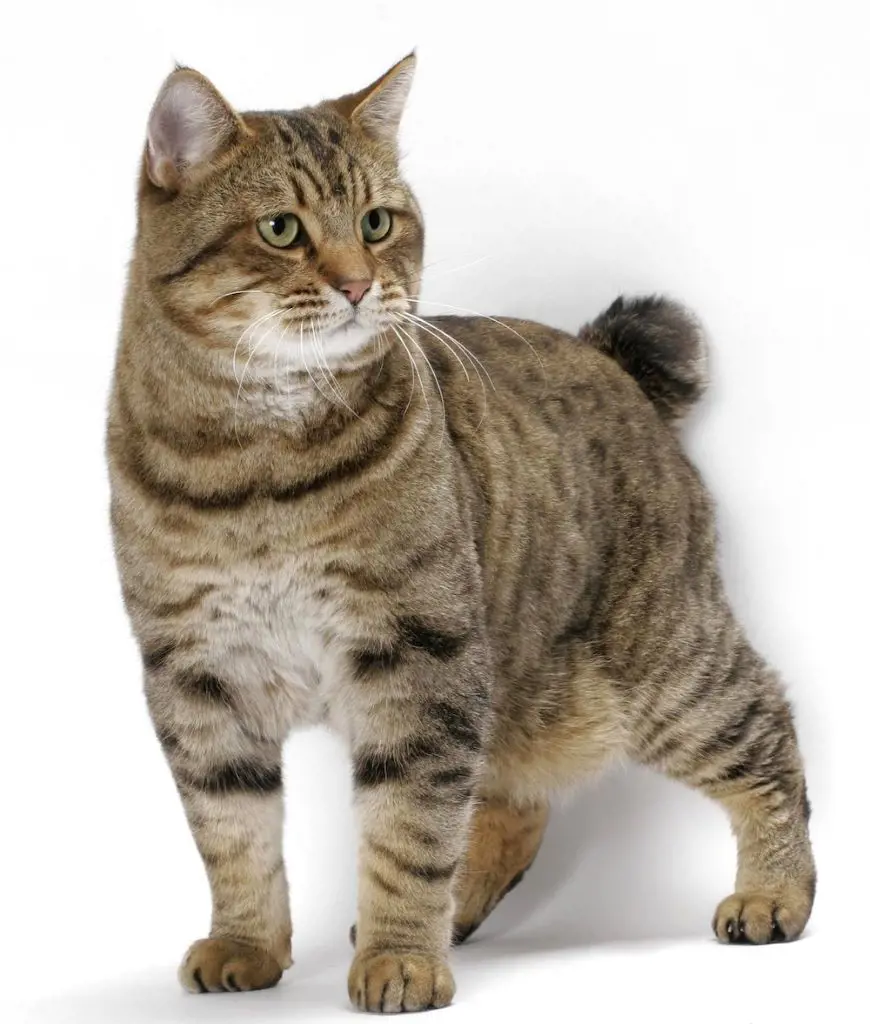
The American Bobtail breed is one of the orange and white fluffy cat breeds. It has a fluffy coat due to its genetics and natural adaptation to its environment. The breed developed in the 1960s when a short-tailed domestic cat mated with a bobcat, resulting in a distinctive bobbed tail and a dense, fluffy coat.
Their coat consists of a double layer of fur, with a longer, coarse guard hair on top and a soft, dense undercoat beneath. This combination of fur layers helps to provide insulation and protection against cold weather, making them appear fluffy. Additionally, the American Bobtail breed has a thick ruff around its neck and tufts of fur on its ears, which further contribute to its overall fluffy appearance.
12. Turkish Angora
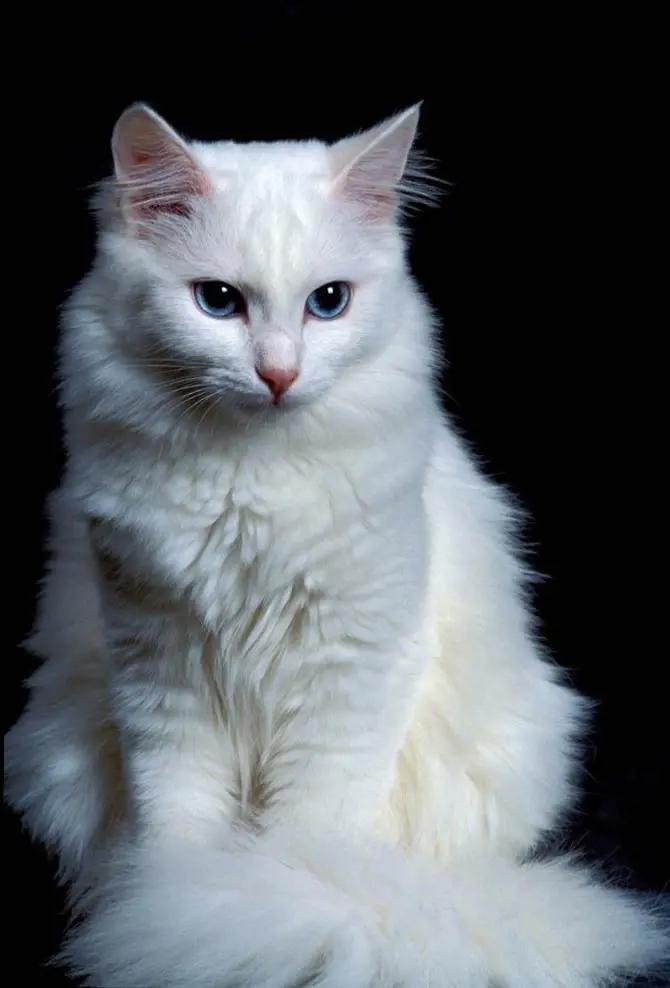
The Turkish Angora breed naturally has a long, soft, and silky coat. Their coat consists of a fine undercoat and longer guard hairs. Their fluffy coat is a result of their genetic makeup. They has been selectively bred for centuries, and breeders have focused on maintaining and enhancing the characteristics of their long, silky coat.
In addition to genetics, the Turkish Angora's fluffy appearance is also influenced by proper grooming and care. Regular brushing helps to prevent matting and keeps the coat looking fluffy and well-maintained. Additionally, a balanced diet and good overall health contribute to the quality and fluffiness of the coat.
13. Calico Cat
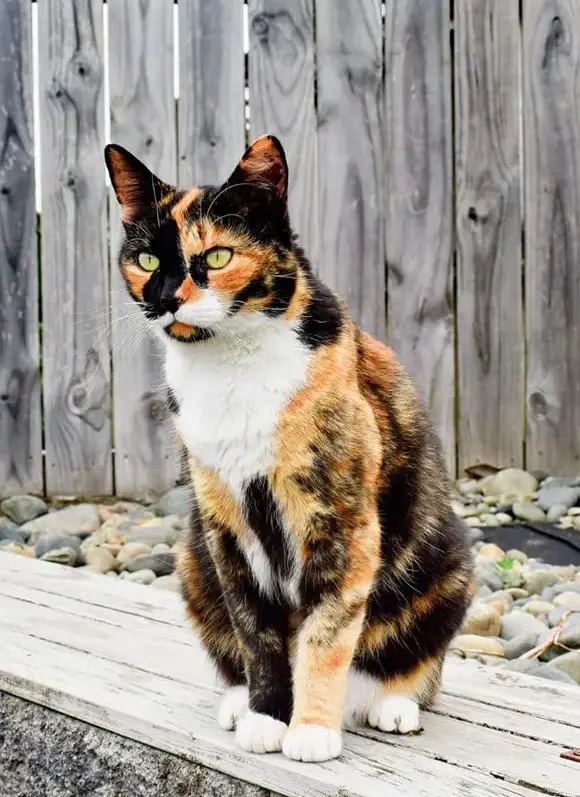
Calico cats are known for their beautiful and unique coats. The term "calico" refers to their tri-color pattern, which typically consists of patches of white, orange, and black fur. Hence it is also called a fluffy orange black and white cat. The fur of a calico cat can vary in length and texture, but many calicos have a fluffy and soft coat.
It's important to note that not all calico cats are fluffy. The texture and length of a cat's fur can vary depending on their genetics, breed, and individual characteristics. So, while some calico cats may have a fluffy coat, others may have a shorter or smoother coat.
14. American Shorthair
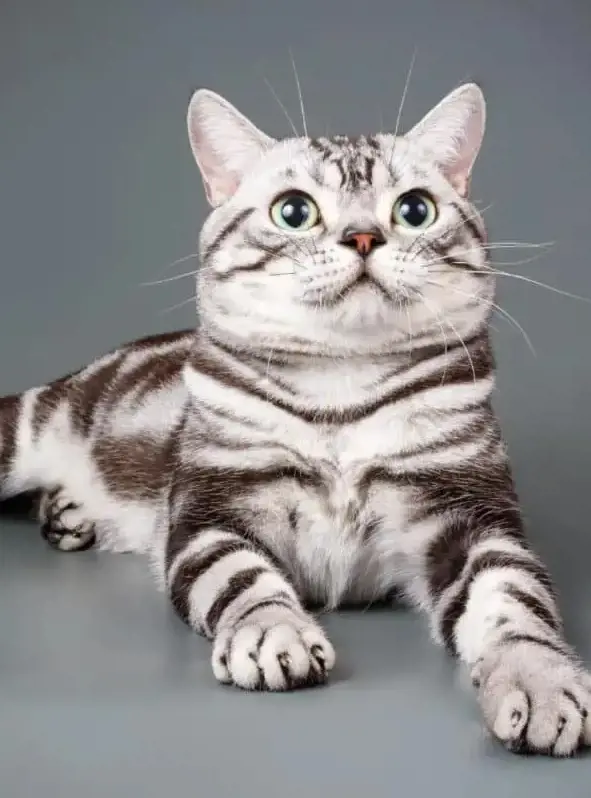
The American Shorthair cat breed is known for its short and dense fur, which is plush and easy to maintain. Their fur comes in a wide variety of colors and patterns, including tabby, solid, tortoiseshell, and calico. The coat is often described as "shimmering" due to its glossy appearance.
They typically have round faces, expressive eyes, and a sturdy build, which many people find appealing. This cat breed originated in the US. Its ancestors were European cats brought to North America by early settlers, primarily to help control the rodent population on ships and in colonies.
15. Birman
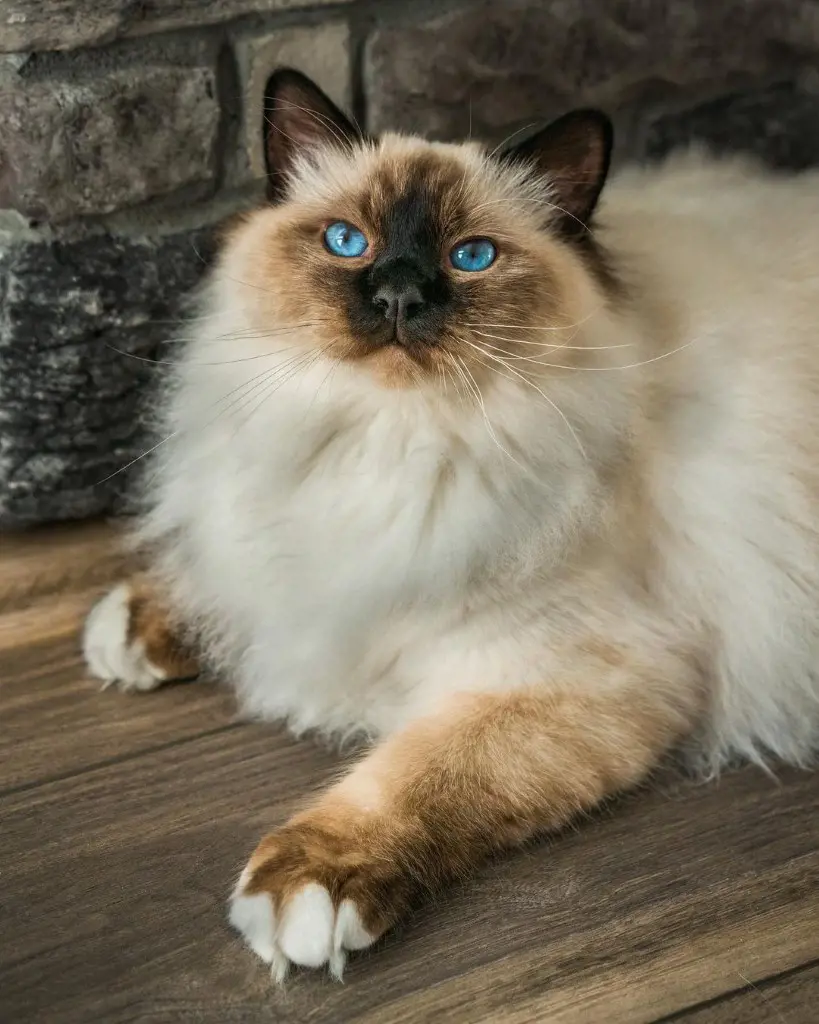
Birman cats have a medium to long fur. They are fluffy due to their double coat. Their fur is dense and does not mat easily, making it relatively low maintenance. The fur is typically lighter in color on the body and darker on the points, which include the ears, face, paws, and tail.
Birman cats also have striking blue eyes, which are a prominent feature of their appearance.
This cat breed is believed to have originated in Burma (now Myanmar) in Southeast Asia. Legend has it that they were sacred temple cats that resided in temples and were considered to be the companions of priests and worshipped as deities.
16. Devon Rex
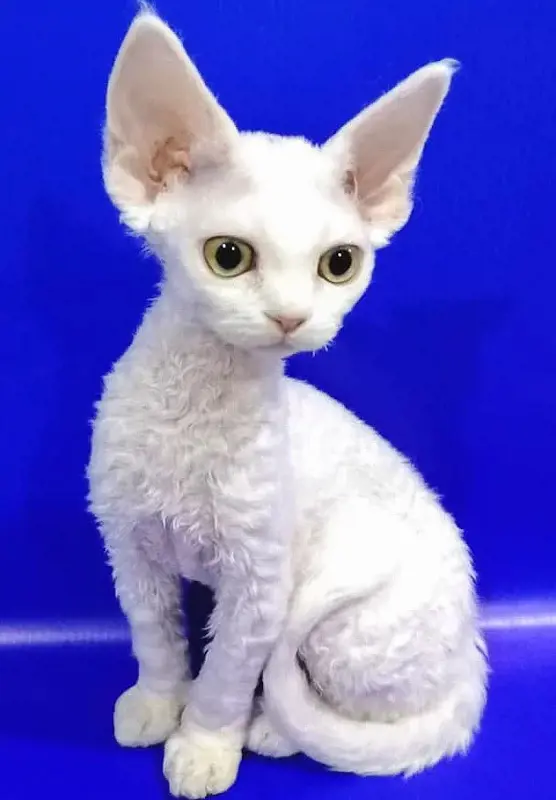
The Devon Rex has a short, curly, fluffy coat that sets it apart from other cat breeds. The curls are often described as resembling a lamb's fleece or a poodle's curly hair. The fur of a Devon Rex is incredibly soft and fine. It has a delicate texture that feels almost like velvet.
The cat breed originated in England in the 1960s. It is named after the county of Devon, where it was first discovered. The breed was developed through a natural mutation in a curly-haired stray cat named Kirlee, who had a unique coat texture and appearance.
17. LaPerm
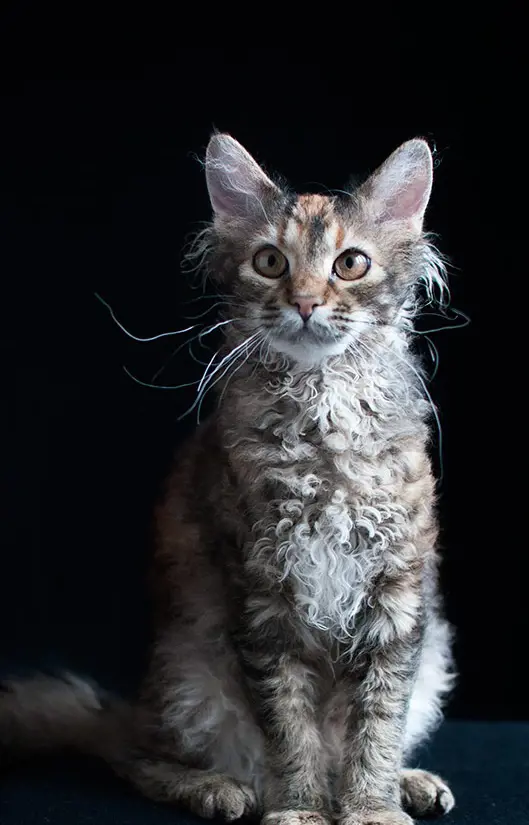
LaPerm fur is exceptionally soft to the touch, giving the cat a plush and cuddly appearance. Unlike many other cat breeds, LaPerms do not have a dense undercoat. Instead, their fur consists of long, curly guard hairs that grow from the skin.
The fur curls can range from loose to tight, and they cover the entire body, including the tail and whiskers. LaPerms come in a wide variety of colors and patterns, including solid, tabby, tortoiseshell, and calico. The curls in their fur can add an extra dimension to these patterns, making them even more eye-catching.
The breed was named "LaPerm" due to its unique coat, which resembles the texture of a permanent wave hairstyle. The breed originated in the United States in the 1980s. It is believed to have been a naturally occurring mutation that resulted in a curly or wavy coat.
18. Selkirk Rex
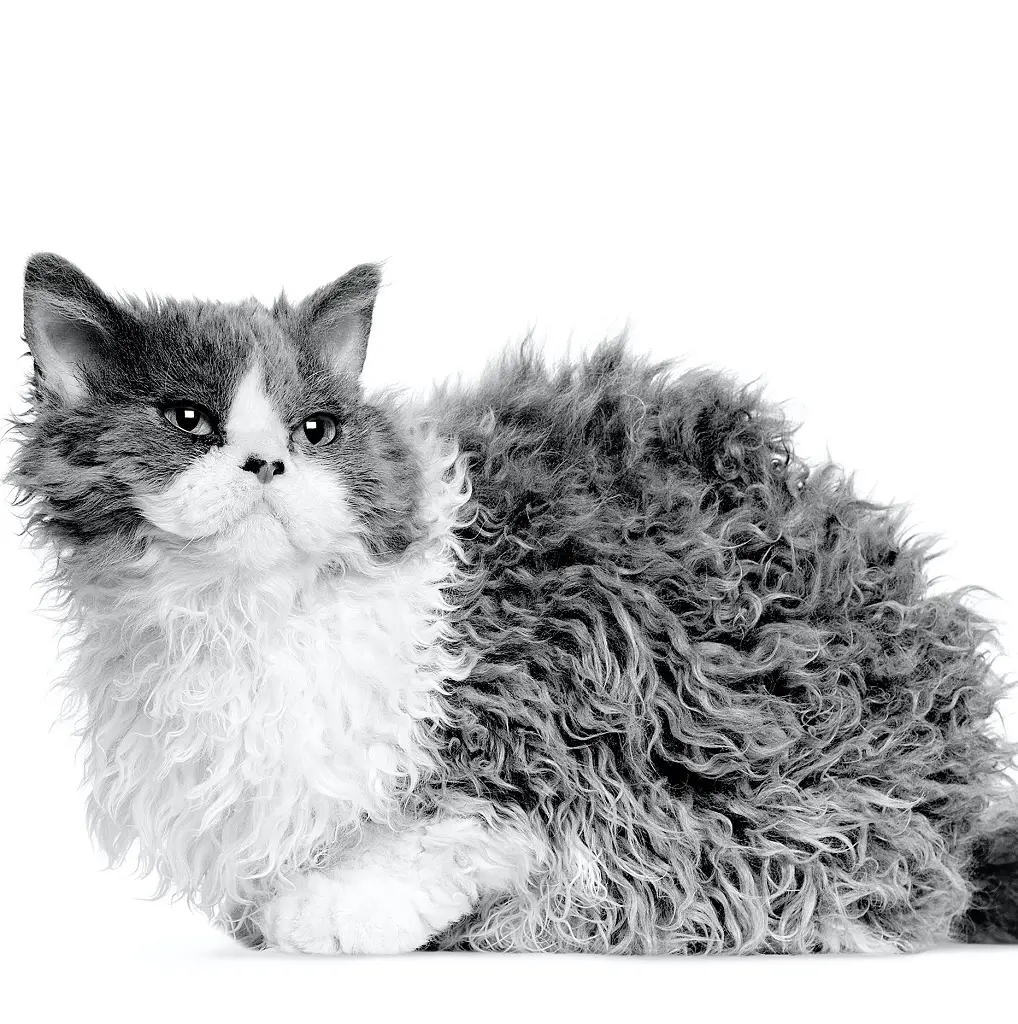
The Selkirk Rex is known for its unique and attractive fur. Their fur is often compared to a teddy bear or lamb's wool due to its texture and density. It is typically thick and abundant, making the cat look fluffy and cuddly. The curls add an element of charm and playfulness to the overall look of the cat.
In terms of colors and patterns, the Selkirk Rex comes in a variety of options, including solid colors, tabby patterns, tortoiseshell, and pointed patterns. This diversity adds to the overall visual appeal of the breed.
The breed was developed by breeder Jeri Newman, who bred a curly-haired kitten named Miss DePesto. Miss DePesto had a unique curly coat due to a natural genetic mutation.
19. Chartreux
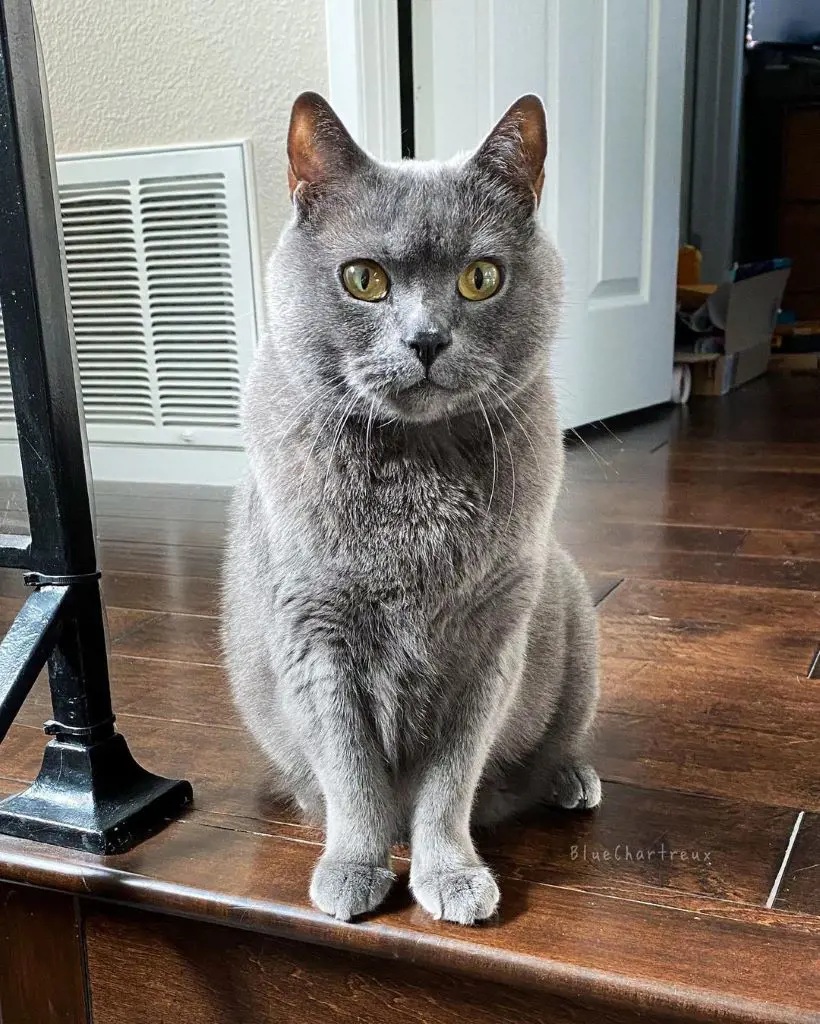
The Chartreux cat breed is known for its thick and dense fur. The coat is short but plush and stands out due to its dense undercoat. The fur is usually blue-gray in color, which adds to the cat's overall fluffy look. The Chartreux's fluffy coat not only gives it an adorable appearance but also helps protect it from the cold weather.
The fur of a Chartreux has a woolly texture, which gives them a plush and cuddly appearance. It is often described as feeling like sheep's wool. The coat is often described as having a "smoke" appearance with a silvery-blue hue. This color is unique to the breed and is one of its defining characteristics.
20. Somali Cat
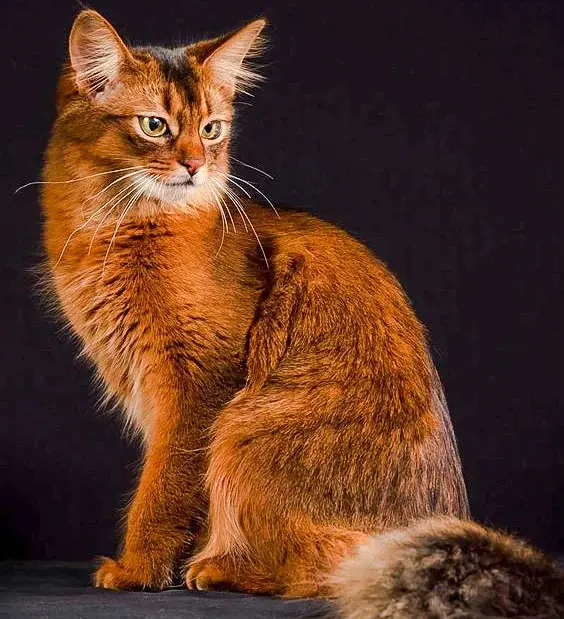
The Somali cat is a long-haired breed of cat that originated from the Abyssinian cat breed. Their coat is thick and fluffy, with a ticked pattern similar to that of the Abyssinian. The coat comes in various colors, including red, ruddy, blue, and fawn.
The fur of Somali cats is dense and soft, with a silky texture. The Somali fur requires regular grooming to prevent matting and to maintain its beautiful appearance.
Recent posts
Cats
Why Do Cats Eat Grass?
Eating grass is a common behavior observed among domestic cats, sparking curiosity and speculation among pet owners and veterinarians alike. Observations suggest that even well-fed cats with no apparent nutritional deficiencies engage in this habit, ...
Cat Years To Human Years Age Chart
Understanding how old your cats are compared to humans is essential for properly caring for them. You might have heard that one cat year is like seven human years, but it's not simple. Cats grow and age differently than we do, so we need a better way...
18 Common Signs Your Cat Is In Pain
Cats are stoic animals, and most of the time, they mask any type of pain until it becomes too much to bear. In many ways, being a responsible pet owner encompasses the ability to recognize the unseen signs that your feline friend is in pain. Knowing ...
18 Reasons Why Cats Hiss & How To Stop The Behavior
Cat hissing is a distinctive behavior that often surprises and intrigues those who witness it. The sound, a sharp and sudden exhalation, is accompanied by a variety of physical cues. If your cats are hissing often or for a longer time, you should pay...
18 Reasons Why Cats Are Itching So Much
Cat itching refers to the impact that elicits a cat to scrap, bite, or lick its skin unnecessarily. The condition can be obvious for several reasons, extending from outermost factors like parasites to internal health issues. Skin infestation, b...
20 Cat Jokes That Are The Purrfect Antidote To A Ruff Day
Funny cat jokes have a universal appeal that transcends age, culture, and background. The inherent humor in cat-related anecdotes and puns often lies in the quirky behavior and unpredictable antics of these adorable feline companions. These catchy on...
